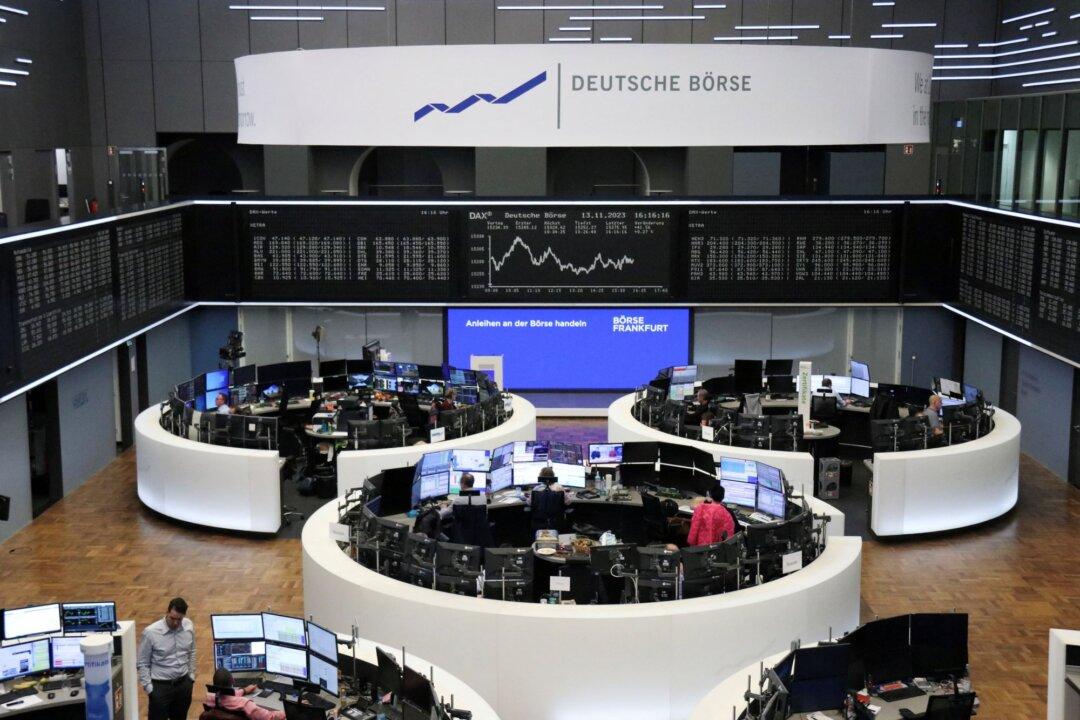LONDON—World stocks fell for the first time in five sessions, oil slipped, and the dollar saw a slight lift on Thursday, as markets continued to assess the prospect of falling interest rates after nearly two years of relentless gains.
Europe’s early moves saw the STOXX 600 index dip from a more than one-month high, while Taiwan’s dollar rose after China’s Leader Xi Jinping and U.S. counterpart Joe Biden agreed to reinstate key military communications.





